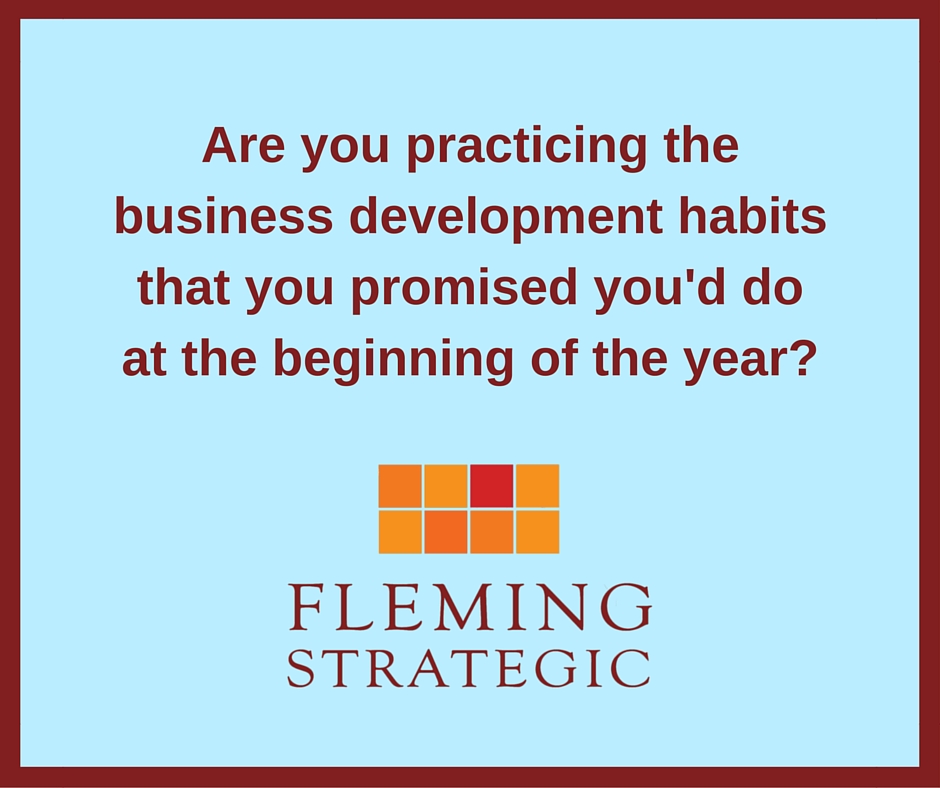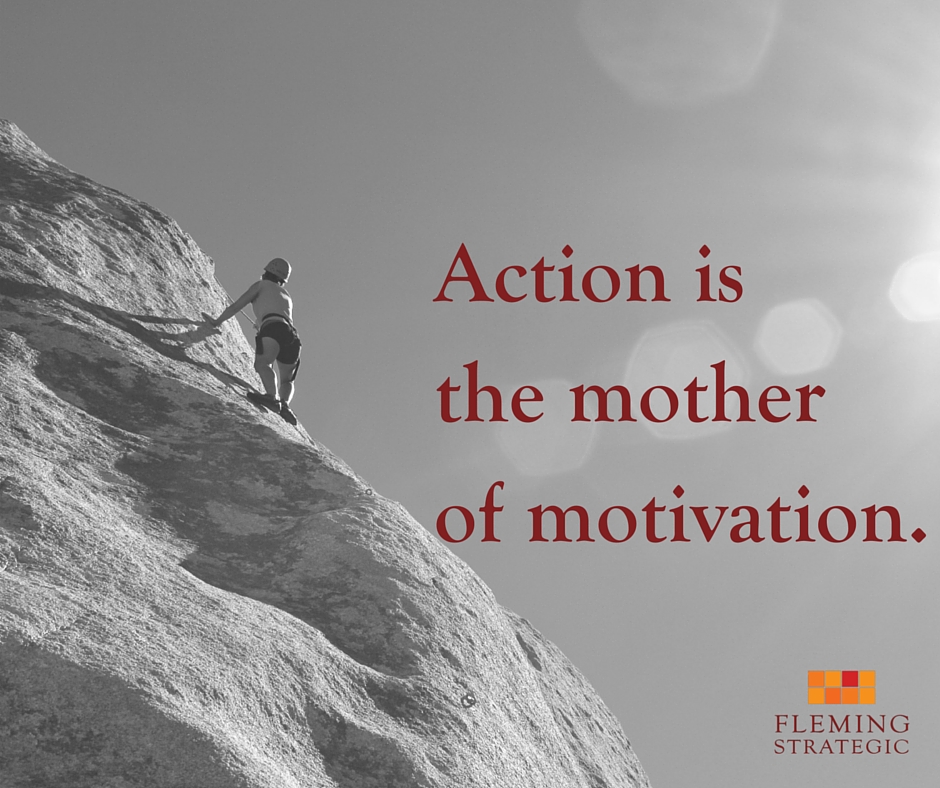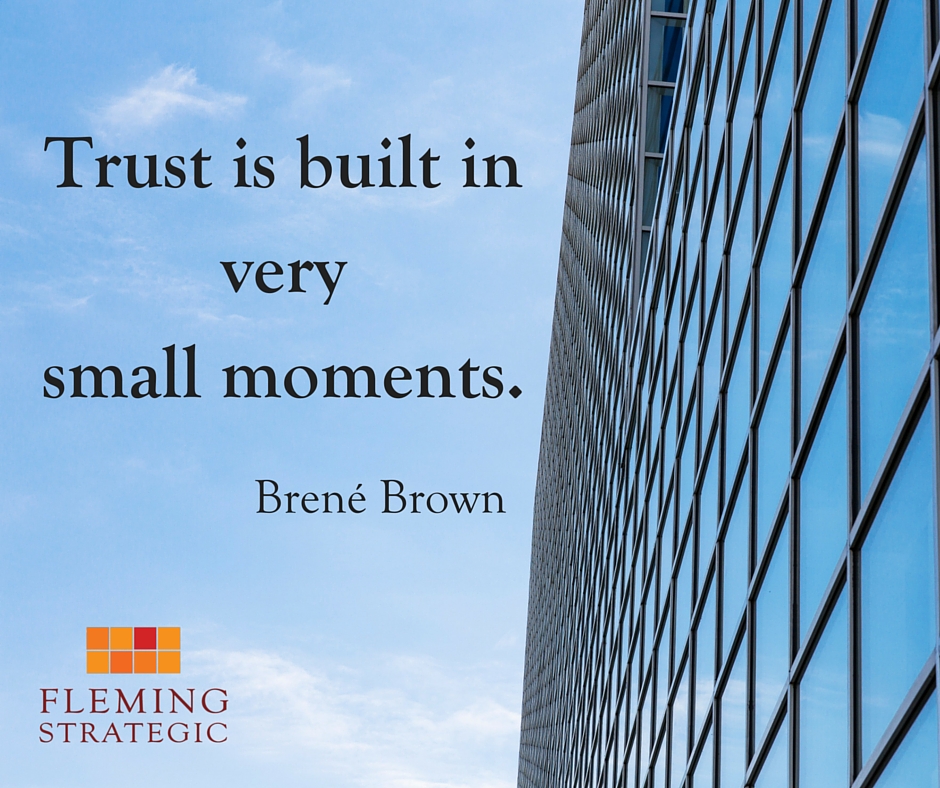Archive for year: 2016
Planting seeds for biz dev growth
/0 Comments/in Book reviews, Business Development /by Julie FlemingAfter you read the review (and, I trust, the books themselves), please drop me a line and let me know what questions you have about implementing the lessons the books share. If you have a success story that’s driven by those lessons, I’d love to hear that too!
I’ve never reviewed two books in a single review before, but these two are such neat parallels in both style and message that I just can’t resist the temptation. The message of both of these short, quick reads is simple: if you genuinely care about other people and helping them to succeed, your business will grow well and authentically.
Both books are written as parables, using the story of a struggling business person’s meeting with a kind and mysterious, all-knowing mentor to illustrate how exactly to go about creating meaningful business relationships. I don’t care for the parable style of business book, simply because it typically rings a little hollow and sometimes permits the teaching to stay at a superficial level, never getting the specifics. Both The Go-Giver and The Referral of a Lifetime avoid these problems. The Referral of a Lifetime excels particularly, because it includes an appendix with templates and samples that the reader can adapt for his or her own needs. The parable style is also handy to convey a great deal of information without pedantic repetition, and it ends up being quite effective in both books.
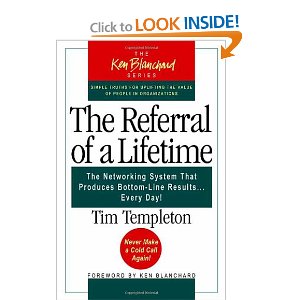 Each book is based in just a few simple principles. The four principles offered in The Referral of a Lifetime are:
Each book is based in just a few simple principles. The four principles offered in The Referral of a Lifetime are:
- The 250 by 250 Rule: It’s not only who you know that counts, it’s who your clients know that is important.
- Build a database [of your contacts] and ABC it.
- Just Let Me Know: Educate your clients about how you work and your value to them through regular, tangible actions performed without fail.
- Keep in touch consistently, personally, and systematically.
The Go-Giver shares what it calls The Five Laws of Stratospheric Success:
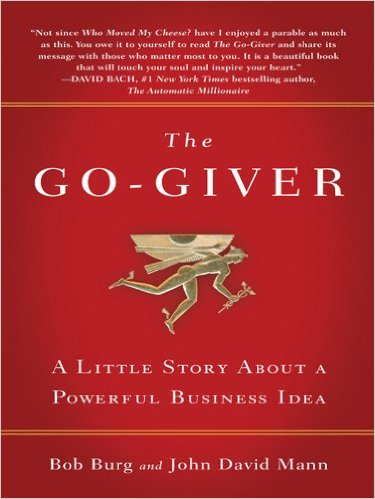 The Law of Value: Your true worth is determined by how much more you give in value than you take in payment.
The Law of Value: Your true worth is determined by how much more you give in value than you take in payment.- The Law of Compensation: Your income is determined by how many people you serve and how well you serve them.
- The Law of Influence: Your influence is determined by how abundantly you place other people’s interests first.
- The Law of Authenticity: The most valuable gift you have to offer is yourself.
- The Law of Receptivity: The key to effective giving is to stay open to receiving.
The principles set out in these two books are consistent and mutually supportive, yet the two books are quite distinctive. The Referral of a Lifetime teaches you a system for defining and harnessing your already existing network of clients and other contacts, whereas The Go-Giver offers more of a general approach to living and doing business and less of a step-by-step system.
As I was reading these books, I saw them in action with a friend and colleague. Late on Friday afternoon, I received an email from this person, looking for help because a shipper had failed to pick up a pallet of her product from a manufacturing facility in a small town. She was facing two separate time crunches: her product would expire if not shipped promptly, and she needed it to be delivered to her customer more than a thousand miles away no later than Tuesday at noon. Her shipper couldn’t help, and she sent out a request for help after all of the obvious solutions proved unworkable.
A note about this person: in addition to having a fabulous product, she genuinely seeks to help everyone she meets. She’s one of these “never met a stranger” types of people who loves nothing more than sharing her contacts and resources.
Within just a few minutes of sending out her SOS, my friend has received a bunch of ideas and suggestions. Within a couple of hours, one of her contacts arranged for the product to be shipped at a price less than 1/3 of the price that other shippers had quoted for slower service, and that same contact had introduced her to a potential joint venture partner. Good luck that this contact saw my friend’s email? Sure. But it was their relationship (and his adherence to the values behind The Go-Giver and The Referral of a Lifetime, whether he’s actually read those books or not) that prompted him to swing into action.
If you read only one of these books, I’d encourage you to start with The Go-Giver. It’s a very fast read, and the principles it shares will affect the way you see and do business. Once you’re convinced that giving to others is not just the right thing to do but the smart business move, then read The Referral of a Lifetime to get specific ideas on how to implement the principles into your day-to-day life. Even if it takes you some time to figure out how to build your own system, I almost guarantee that the books will change how you approach others in business — for the better, for you and for them.
Motivation and action
/0 Comments/in Business Development /by Julie FlemingHave you ever caught yourself thinking about a task you need to complete and wishing you could just get yourself motivated to do it? That happens especially with tasks that don’t have a specific deadline, and even more so if the task isn’t one that feels like it comes naturally.
Business development tasks are one example of “must have motivation” activities. The tasks take significant effort: writing an article, having lunch with a contact to accomplish some specific goal, and similar tasks take time, energy, and thought. If you don’t particularly enjoy the effort, it’s easy to delay it until you feel motivated. So you wait, but what happens if the motivation never comes?
I saw a great quote a few days ago that may bring this struggle into new focus:
This applies to business development in two ways:
- If you aren’t feeling motivated, take some action. It’s often challenging to start something new, but once you’re in process, it may be easier to continue. If you want to write an article, for example, try outlining it first—both as a way to organize your thoughts and as a way to get started with something easier than actually writing. Once the outline is done, you may feel more willing to start writing, and you’ll certainly find it easier to do because you already know where you’re headed with your text.
- As you see positive results, you are likely to find yourself more motivated to continue. If you have lunch with a contact and it leads to something good (an introduction to someone you’ve been wanting to meet or a referral, for instance), you’re more likely to set up lunch with another contact. This is where momentum comes into play, too: consistent action tends to beget more action.
So, the bottom line: if you’re feeling unmotivated, do something. Take even a small step. You’ll likely find that your action will increase your motivation, which will lead to more action.
Make ’em look good!
/0 Comments/in Business Development, Client development /by Julie FlemingIf there’s one single activity that should be at the center of your business development focus, it’s building relationships. How? Through personal meetings, telephone calls, emails, social media contacts, sending useful articles, sharing new resources, and more. There’s no single right way to establish, build, or maintain relationships, and the best growth strategies (which feel a lot like organic relationship growth) include multiple approaches.
But…
There is a right way to think about developing relationships: look for opportunities to help your contact. That can mean anything from providing information and resources to help with her or her career, giving a lead on a new restaurant, making an introduction to someone useful, or offering a plum speaking or committee position.
You might also look for opportunities to offer help that makes your contact look good to people who matter. For clients, can you provide a report that your client contact can use to look good while presenting to the Board of Directors? Can you identify a new trend that your contact can exploit or share with others? Can you offer support to help your contact settle into a new position?
Especially as it concerns clients, Vidal Sassoon said it best: “If you don’t look good, we don’t look good.” Flip that around to the positive, and let it guide your relationship-building: when we help you look good, we look good to you.
Don’t be a stranger
/0 Comments/in Business Development, Client development /by Julie FlemingLast fall, I hired Summit Pools to close my pool for the season. My contact Pete (I didn’t know it at the time, but he’s also the owner) was terrific: he set the appointment, let me know exactly what to expect, told me what the cost would be and what could change that cost, and explained the benefit of the service. He called me the day before our appointment to confirm the time, and he showed up right on time—after sending a text to let me know he was on the way. It was a great experience, and I just plain liked Pete.
Fast forward to March, when I was eager to make arrangements to get the pool open. I couldn’t remember the name of the company I’d liked so much in the fall, and I hadn’t put it in my Home Maintenance Evernote file. I went through emails and my calendar without success. Because I remembered something about a P, I looked at companies with names like Pinnacle, Premier, Popular, and the like, and I hired one of those companies since I couldn’t find the original.
And the service was ok. No reminder call, but a quick response when I called to confirm. The work wasn’t done perfectly, but it was adequate. I didn’t think much of it and probably would have continued with the new company, except that I had a few issues with the pool and wasn’t getting the kind of response I wanted. I eventually went through my checkbook register to find Summit again, and I got the same fast, capable, friendly service. This time, I put Summit (and Pete) in my phone and in my Evernote database.
Do I hear a great big SO WHAT?
What does this have to do with law?
If you do large, complex matters, chances are reasonably good that your clients know exactly who you are and how to find you if they want to hire you again or send a potential client your way. However, if your matters tend to be of relatively short duration, with limited direct contact, or somewhat routine, you could be missing out on repeat business and referrals if you don’t proactively stay in touch. Even if you’re confident that your clients will know how to find you to rehire you or refer work to you, staying in touch will keep you top-of-mind and continue the relationship so they’ll think of you first.
Consider these steps:
- Send reminders if the work you do should be reviewed and updated periodically (estate work and some contracts, for example). An email or postcard will suffice. Schedule these reminders as soon as you complete the matter.
- Send follow-up resources. Perhaps there’s a logical next step for your client. Establishing a new company could lead to later needs like contract review, intellectual property protection, or a buy/sale agreement, among many others. Provide appropriate resources at an appropriate interval. This too should be scheduled as soon as you complete your work for the client.
- Keep in touch. Sometimes you don’t need a specific reason for a contact. Depending on the representation and your relationship, it may be quite appropriate to send an email or call to touch base. You might inquire how things have been going since the matter ended. But here’s the key point: you must be genuinely interested, not just trolling for new work. Where appropriate, an electronic or hardcopy newsletter offers an opportunity to stay in touch without taking the time to make every contact individually.
Here’s the bottom line: don’t put the onus of finding you or updating the work you’ve done solely on your client. Friendly and useful ongoing contact is a benefit for your client and potentially a path to new work for you.
Learn to love networking!
/0 Comments/in Business Development, Networking /by Julie FlemingYou already know that networking is important, right? In case you need a refresher, consider this data from the Harvard Business Review article Learn to Love Networking:
When we studied 165 lawyers at a large North American law firm, for example, we found that their success depended on their ability to network effectively both internally (to get themselves assigned to choice clients) and externally (to bring business into the firm). Those who regarded these activities as distasteful and avoided them had fewer billable hours than their peers.
If you aren’t a fan of networking (or if you feel uncomfortable or inauthentic while networking), read Learn to Love Networking and discover four simple strategies to overcome your distaste. Here’s my favorite insight from the article:
In the law firm we studied, we found that attorneys who focused on the collective benefits of making connections (“support my firm” and “help my clients”) rather than on personal ones (“support or help my career”) felt more authentic and less dirty while networking, were more likely to network, and had more billable hours as a result.
In other words, like sales, networking isn’t something you do to someone but something you do for and with others.
The 3 Phases of Marketing
/0 Comments/in Business Development /by Julie FlemingSeth Godin’s recent blog post Awareness, trust and action, identifies and describes the three phases of marketing outreach. Godin defines “marketing outreach” to include ads, PR, and sponsorships, but I’d suggest that it also encompasses business development activities.
Read this post! Using this simple three-phase model will help you to organize your business development tasks and be sure that you’re working in each phase so that you’re known, trusted, and having conversations that may move your potential clients to action.
Meeting Client Expectations… Or Not.
/0 Comments/in Business Development, Client development /by Julie FlemingOne of the top client complaints received by bar associations across the country has to do with lawyers’ failure to return telephone calls. I haven’t seen statistics, but I suspect that clients also complain about lawyers who fail to answer email. Clients expect that lawyers will communicate with them in a timely manner, and on the surface, just about all lawyers agree. And the same is true for other service providers, including those who don’t have a professional oversight board of some sort.
But we’ve all had that annoying client. You know, the one who is constantly on the phone or sending yet another email with an unnecessary question or comment. The one who is so insistent on knowing when a task will be completed that it may feel like you won’t have time to do the work unless you “ignore” the client for a while. And even if you don’t have one of those clients, you’re probably still swimming in telephone calls and emails – we all are these days.
So, how do you deal with client expectations about communications? If you meet every expectation, you may fear that you’ll add dramatically to your workload and you may worry that your clients will dictate how you operate your business; if you don’t meet expectations, you may find yourself on the wrong end of a complaint, or you may discover that dissatisfied clients are telling their friends and colleagues about your [perceived] poor service. What’s the answer to this catch-22?
Have a conversation with your clients about communications at the time of engagement. The most dangerous expectations are those that go unexpressed. If, for example, a client is expecting a weekly check-in and you don’t realize that, it’s probably a safe bet that the client will quickly feel dissatisfied and either start clamoring for attention or silently smoldering. If you ask what the client expects, you’ll have an opportunity to meet that expectation.
And, you may choose not to meet the client’s expectations, instead finding an arrangement that works for you as well as for your client. When there’s nothing pressing, for instance, you may not communicate with the client for some period of time. If you bill based on time, unnecessary communications will run up your client’s bill (perhaps creating greater dissatisfaction), and if you use a flat fee arrangement, unnecessary communications can eviscerate your profit. Planning in advance to advise that a quiet period is coming instead of taking the time to give weekly reports of “nothing new” will serve your client and yourself.
When you discuss expectations, you can respond to what your client expects by sharing your own expectations. Some clients will be satisfied when they understand when and why you communicate (especially if you agree to communicate in the manner your client prefers), some may negotiate with you in some way, and some may choose not to hire you. Regardless of the outcome, both of you will come out ahead for having had the conversation.
What’s more, when you build this into your pre-engagement conversation, you may find that this conversation can either convey or serve as a value-add for your client. Your client may not expect weekly updates, but if you share that aspect of your practice in advance and the value that other clients find in those updates, your ordinary habit may be a selling point that gets you hired. And anytime you can both increase the likelihood of securing new work and increasing client satisfaction with one simple conversation, shouldn’t you do it?
Clients aren’t property.
/0 Comments/in Business Development, Client development /by Julie FlemingAn interesting article to share with you this week:
Law Firms Leaders’ Moneyball Mistake: (registration is required to view the article) Written by Steven Harper, author of the can’t-miss book The Lawyer Bubble, this article points out the problems with large firms’ “aggressive inorganic growth” via lateral hires. Harper quotes Group Dewey Consulting’s Eric Dewey’s observation that, “An attorney needs to bring roughly 70 percent of their book of business with them within 12 months just to break even,” and that “more than one-third bring with them less than 50 percent.”
Why should you care? If you’re in a large firm, understanding these issues is important in considering firm growth and your own professional options. If you’re in a smaller firm, the lessons may still attain.
More importantly, the article offers the reminder that clients are not property. Whether you’re planning to bring or receive portable business, or whether you’re planning to inherit a book of business from a retiring attorney, it’s important that you understand that successfully requesting any kind of client shift depends on trust and a strong relationship that extends to the new situation.
And so it’s important to be building trust and relationships with your clients even if you have no intention of asking them to follow you to a new firm or to work with your designee when you leave practice. It’s too late to do that work when a change is imminent, and in the absence of a trusting attorney/client relationship, you may find your client shifting work to another lawyer or firm.
What will you do with this information today?
How do you establish trust?
/0 Comments/in Business Development, Client development /by Julie FlemingYou’ve probably heard some version of Bob Burg’s statement that, “All things being equal, people will do business with and refer business to, those people they know, like and trust.”
We tend to focus on getting known, we work to communicate in a way that increases the chances of being liked, but how do you build trust? I like this perspective:
What does this mean in the context of business development and the practice of law? Ensure, to the greatest extent possible, that everything you do increases (or at least doesn’t decrease) your trustworthiness. For example:
- Return calls and emails within a reasonable time. (Extra points for letting your contacts know when they should expect to hear from you.)
- If you say you’ll do something (whether it’s billable work or following up on a conversation), do it at the time and in the way you said you would.
- If you send a newsletter, send it consistently.
- If you’re asked a question and you don’t know the answer, say so and promise a follow-up—and then follow up when you said you would or sooner.
- If you’re wrong about something or you make a mistake, own up to it. Explain if necessary, but don’t make excuses.
- Be findable in the groups and publications where someone in your field would ordinarily be found. (If you’re an elder law attorney, for example, you might be a member of the National Academy of Elder Law Attorneys.)
- Have a professional presence both offline and online that fits your practice. (Your “vibe” will be likely different if you work with musicians than if you serve Fortune 100 companies, for instance.)
These are just a few examples of how you might do your part to appear and be trustworthy. What opportunities do you see in your own practice?

